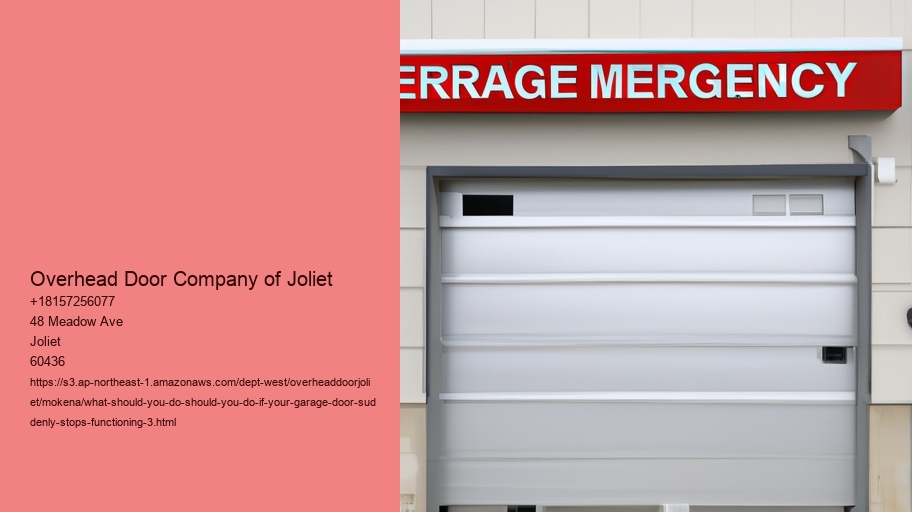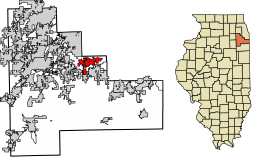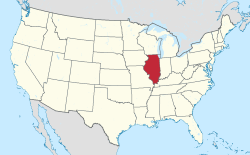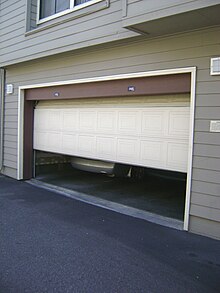What kind of garage door Opener and Door Do You Have? .
If a garage door suddenly stops functioning, it's a stressful and uncomfortable experience.Whether you are rushing out for work or trying to drive your car to the garage after a heavy rain or storm, a door that isn't working is the last thing you'd like to deal with.The first step to address the issue is to determine the type of garage door and opener you have as it will drastically affect your strategy for fixing and troubleshooting.
Roll-up garage doors which are often used in commercial environments comprise slats that are then rolled up into a coil.
Tilt-up doors, on the contrary they are a solid piece that tilts in and up when it opens.Belt-drive garage door openers are quieter, however, they employ a rubber band rather than a chain. They're an excellent option for garages that are attached. Garage door openers with screw-drive make use of a rod made of steel to move the garage door. This is the best balance between cost and noise.
After you have identified your garage door and opener type then the next step is to conduct a the basic test for common issues.Ensure that the power source is connected to the opener by checking the plug and breaker.Inspect the manual release cord to make sure it hasn't been pulled, which will disconnect the door from the opener.Examine the door's tracks and rollers for obstructions, or damage and clear any obstructions.
Lubricate moving parts as needed because a lack of lubrication can lead to jamming or sticking.If your door continues to not operate, consider resetting the opener.This is often a solution to electronic malfunctions or faults.Consult your opener's manual for specific reset instructions, as the process may differ between models.Many modern openers feature reset buttons, but others may require unplugging them and reconnecting.
In some cases the problem may be more complicated such as a broken spring or a motor that is worn out that requires professional assistance.Springs are in a high tension and can be dangerous to repair without proper tools and expertise.
In the end, if your garage door suddenly stops working, the
Be sure to look for obstructions or debris.
What should you do should you do if your garage door suddenly stops functioning? - garage door opener
- drill
- The Home Depot
- Central Illinois
It's not easy and perplexing when your garage door doesn't work suddenly, especially if you use it every day.
One of the most important and most practical steps to consider when you are faced in this scenario is to check for obstructions or debris.This simple but effective step could be the answer in identifying the issue and restoring functionality to your garage door.Garage doors are based on a system of tracks, rollers, as well as other parts that have to be free of obstacles to work smoothly.Over time dirt, leaves, tiny rocks, or any other debris may accumulate along the tracks, or get trapped in the rollers.Even a small obstruction can stop the door from closing or opening properly.Therefore an inspection thorough of these parts should be your first course of action.
Start by inspecting the tracks both on the right and left sides of the door. Look for obvious obstructions, or even debris build-up. If you spot something odd, such as the twig or rock that is stuck in the track. Remove it with care.
There are times when the problem may not be immediately visible It is recommended to run your hand along the track in order to feel for any unnoticed obstacles.Ensure that the tracks are aligned correctly too, since a an incorrect alignment can cause the door to be jammed. The next step is to inspect the rollers and hinges.These components should move without resistance.If they're squeaky or stuck, it could be an indication of accumulated grime or rust.In such cases cleaning them and applying lubrication will often solve the issue.Use a soft cloth or brush to wash away any dirt and apply a suitable lubricant to ensure that they move freely.
What should you do should you do if your garage door suddenly stops functioning? - garage door opener
- diameter
- mile
- flag
It's also crucial to examine the area around the door itself.Sometimes items that are stored in garages can slide or shift, obstructing the path of the door.Ensure that the space is clean and that nothing is blocking the door's movements.
Make sure the sensors are working if the door is not opening after you have cleared any obstructions.
The sensors of modern garage doors can malfunction when they're dirty, or if they are not aligned correctly.When confronted with an garage door that suddenly isn't working, looking for obstructions or debris is a logical and often efficient first step.It requires minimal tools and experience, but it can save your time, money, and the inconvenience having to call a professional for the most straightforward fix.By making sure that the path is clear and
Verify the wall switch as well as the remote control
When your garage door suddenly stops working or is not working, it's an unexpected issue that can disrupt your daily routine.In these situations there is a natural feeling of the need to resolve the issue quickly.One of the first and most efficient steps you should consider is to check the remote control as well as the wall switch.
These components are often the cause of the garage door not responding, and making sure they are checked can save you time and possibly avoid costly expenses.First, consider the remote control.This handheld device is your primary tool for operating the garage door without direct physical interaction.Over time, remote controls can experience issues such as drained batteries, signal interference, or even internal damage.Start by replacing the batteries with new ones.It might seem simple, but dead batteries are a common reason for a garage door not responding.If the problem persists after replacing the batteries, try reprogramming the remote according to the manufacturer's instructions.Additionally, ensure that the remote is within the recommended range and that there are no obstructions blocking the signal.
The wall switch is also an important component of the garage door's system.
If you feel comfortable then open the switch panel to inspect for any damaged or broken wires.In certain instances, the the wall switch may be working but the door remains unresponsive.This could suggest an issue with the garage door opener unit itself or other components such as sensors or door tracks.However, starting by utilizing the wall switch and remote control is an appropriate first step.
You can resolve these issues before moving on to more difficult troubleshooting.This initial inspection will make it easier for you to get your work done and provide confidence that you've taken the right steps to identify the issue.
Verify the door's balance by hand
When your garage door suddenly stops working it could be painful and inconvenient.The garage door is an a vital part of your house, offering security, protection from elements, as well as easy access to your car and storage area.
The first step you must take when faced with a malfunctioning garage door is to manually test the door's balance.This simple yet effective procedure will help identify potential problems and avoid further damage to the door or its components.Balance of the garage door is critical to its correct operation. An imbalanced door can cause more serious problems which include misalignment and broken springs.
To check the door's balance, start by disconnecting the garage door opener.
Most garage doors come with a release mechanism that can be found on the red cord or handle. When the door has been unplugged from the motor, raise the door to waist height and let it go. A well-balanced door will remain at a steady level, or move in a gradual manner.If you discover that the door is not balanced It is crucial to resolve the issue promptly.Door balance issues are usually due to the tension of the springs, which could be risky to adjust on your own because of the tension they're under.It is advisable to seek professional assistance to adjust the springs to ensure that the door is well-balanced correctly.Doing this does not just solve the immediate issue, but also increases the longevity and durability of your garage door system.
The manual testing of the door's balance is an essential first step if your garage door suddenly stops working.
This helps determine the root of the problem, which could be in the door's balance, or in another place in the system.By understanding the importance of door balance and fixing any issues as quickly as possible to prevent further damage and ensure your garage door operates without issue and in safety for years to in the future.Tracks and Rollers
This simple check will help you save money and time when your garage door is not working.
Rollers and tracks are crucial components of your garage door's operational system.The tracks are the iron rails that guide the door as it opens and closes. The rollers are small wheels that travel along the tracks.
These parts can be worn out, dirty or misaligned over time. This will cause malfunctions.Begin by checking the track for any obstructions. Grime, dirt or even small pieces of debris can be accumulating, which causes rollers to struggle to travel through the tracks. Cleansing the tracks with a damp cloth can solve the issue.
The next thing to do is to check the alignment of the track. Tracks should be parallel and perfectly straight. If they appear bent, or not in alignment, the door might jam. It is possible to press the wrongly aligned section back to its proper position using mallets made of rubber. If damage is severe, it's best to contact professionals who can re-align the tracks in a proper manner.
Rollers are prone to wear out over time. This is especially the case if they're made of plastic.
Check for indications of wear and tear, such as cracks or chips.If the rollers seem worn, consider replacing them with new ones.Metal rollers that have ball bearings typically offer greater durability and more smooth operation.Applying silicone-based oils can help reduce friction and wear. It is important to oil the hinges and springs in order so that your garage door is functioning properly.
When you make sure that the components are in good alignment and properly lubricated it is possible to get the garage door back to its full function.
Maintaining and inspecting these components can also help to prevent future malfunctions. This will help prolong the life of the garage system.Look for Visible Damage or Wear
When garage doors stop functioning, it can be annoying and disconcerting, particularly if you are in the process of leaving or attempting to ensure your home is secure for evening.While there could be various reasons for the malfunction One of the most immediate and practical steps to take is to search for signs of damage or wear.This initial inspection is likely to identify the source of the issue, which allows for a quick and efficient solution.
Garage doors are a complex system that is made up of a variety of elements, including springs cables as well as rollers and tracks every one of which plays an important role in the smooth operation.Over time, these parts may wear out from regular use and exposure to environmental factors.
By conducting a thorough visual exam, you can spot any obvious indications of damage causing the door to malfunction.Start your inspection with springs. They are responsible for lifting and lower the door. Find evidence of wear or rust. A worn or broken spring could make the door useless, so it's crucial to repair this problem as soon as you notice it. In the next step, inspect the cables for fraying and broken cables.
The door is yet another part that requires the attention of a professional. Examine for visible dents, warping, or bends.
Additionally, ensure that the sensors of the door are clean and aligned, since misalignment, dirt or dirt can interfere with their functions and make the door stop working.A visual inspection can be beneficial, but it's important to be aware that not all issues are immediately apparent. If you do not see any obvious indications of damage or wear, you may need to consult with a professional to determine the issue.
This will not just enable you to identify the issue quicker, but will assist you in taking steps to restore the functionality of your garage door.
You can extend the lifespan of your garage door simply by being proactive.Assess the Springs and Cables
When your garage door suddenly stops functioning, it can be both frustrating as well as inconvenient.One of the most crucial steps you need to take in this scenario is to check the springs and cables.These parts are crucial to the functioning of your garage door and issues with them are usually the culprits behind a broken door.
The springs play an essential role in the performance and ease of your garage by neutralizing the load. There are two main types of springs, torsion and extension. Torsion springs are positioned above the garage, and they twist to store energy. Extension springs however are installed between the doors and extend to give the necessary force.
Over time over time, these springs may wear out, break or loose tension, leading to operational issues.Additionally, cables are important as they work in tandem with the springs in order to raise and lower the door.They typically consist from steel and designed to withstand high tension.However, they can suffer due to wear and tear, fray, or snap because of the extreme pressure they're under.A broken cable can result in the door becoming unstable or even inoperable.
If you're unsure if the springs or cables need to be adjusted, visually check them. Check for signs of wear or rust.
It's vital to focus on safety when dealing with garage door components.
The springs and cables are in tension and can cause serious injuries. If you do not have the necessary experience for garage door repairs, it's better to speak with a professional. They'll possess the tools and knowledge needed to safely replace or repair these components. This will ensure that your garage door works efficiently and safely.In conclusion, when your garage door suddenly stops working, assessing the springs and cables is a key step in diagnosing the problem.Understanding their role and potential issues can help you determine whether a simple adjustment is needed or if professional intervention is required.Taking prompt action not only restores functionality but also ensures the safety and longevity of your garage door system.
Take a look at calling a professional technician
The garage door could suddenly stop working and cause you to be delayed. It could even expose your home to danger.
What should you do should you do if your garage door suddenly stops functioning? - garage door opener
- Moraine Valley Community College
- Ohio
- garage door opener
Garage doors are complex systems composed of various components such as springs, cables, tracks, and electronic parts.Each of these elements plays a crucial role in the door's operation, and a malfunction in any part can cause the entire system to fail.Without proper knowledge and experience, attempting to fix these issues can be dangerous.For instance, garage door springs are under high tension and can cause severe injury if handled improperly.Professional technicians are trained to deal with these risks safely, using the right tools and techniques to handle repairs.
Moreover, a professional technician is a skilled professional with experience and knowledge that a layperson simply does not have.
They can quickly diagnose the issue and identify whether it's a minor problem, like a misaligned track, or something more serious, like a broken spring.This expertise not only saves you time but also prevents the potential for further damage that can occur with incorrect handling.Professionals also have access to high-quality parts and can ensure that replacements match the specifications of your existing garage door system, leading to better functionality and longevity.A professional technician may be more cost effective in the long run. While a DIY approach may seem to be less costly initially however, it could lead to expensive and costly repairs later on.
Many technicians also provide guarantees on their work, which provides peace of mind knowing that in the event of something going wrong, you are covered.A professional can save you significant time and hassle.Trying to grasp the complexities of garage door mechanics, buy the right equipment, and perform a repair can be time-consuming and take days.In contrast, a professional is able to fix the problem swiftly, allowing you return to your normal routine without delay.
In the end, although the urge to fix the garage door yourself could be strong, calling a professional technician is the most secure best, most efficient, and ultimately, the most sensible option.Their expertise, access to quality parts, and ability to complete quick and precise repairs will ensure that your garage door will be up and running in no time and will protect your home and


















